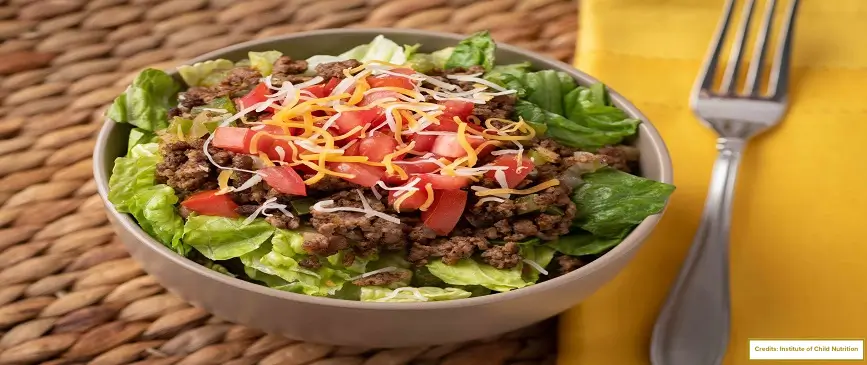Introduction
Have you ever wondered why certain items are banned in school cafeterias? Among the most surprising might be scissors.
While these handy tools are common in classrooms, their absence in the lunchroom raises eyebrows. Yet again, this rule isn’t just a random decision; it results from careful consideration and a history of safety concerns.

Schools prioritize creating a safe environment, and the ban on scissors exemplifies their protective measures. But why are scissors singled out? Is it simply about safety, or is there more than meets the eye?
In this article, we’ll explore the reasons behind the prohibition of scissors and other off-limits items and uncover additional tools that should be banned to ensure every student’s protection.
Get ready for an eye-opening look at what keeps students safe during lunch.
Why Dont They Allow Scissors In The School Cafeteria: The Reasons
One might think scissors are harmless compared to knives. But they’re sharp as a tack and can cause a lot of trouble if not handled with care.
Imagine a bustling cafeteria where everyone’s buzzing around, enjoying their meals. Adding scissors is like playing with fire – accidents waiting to happen.
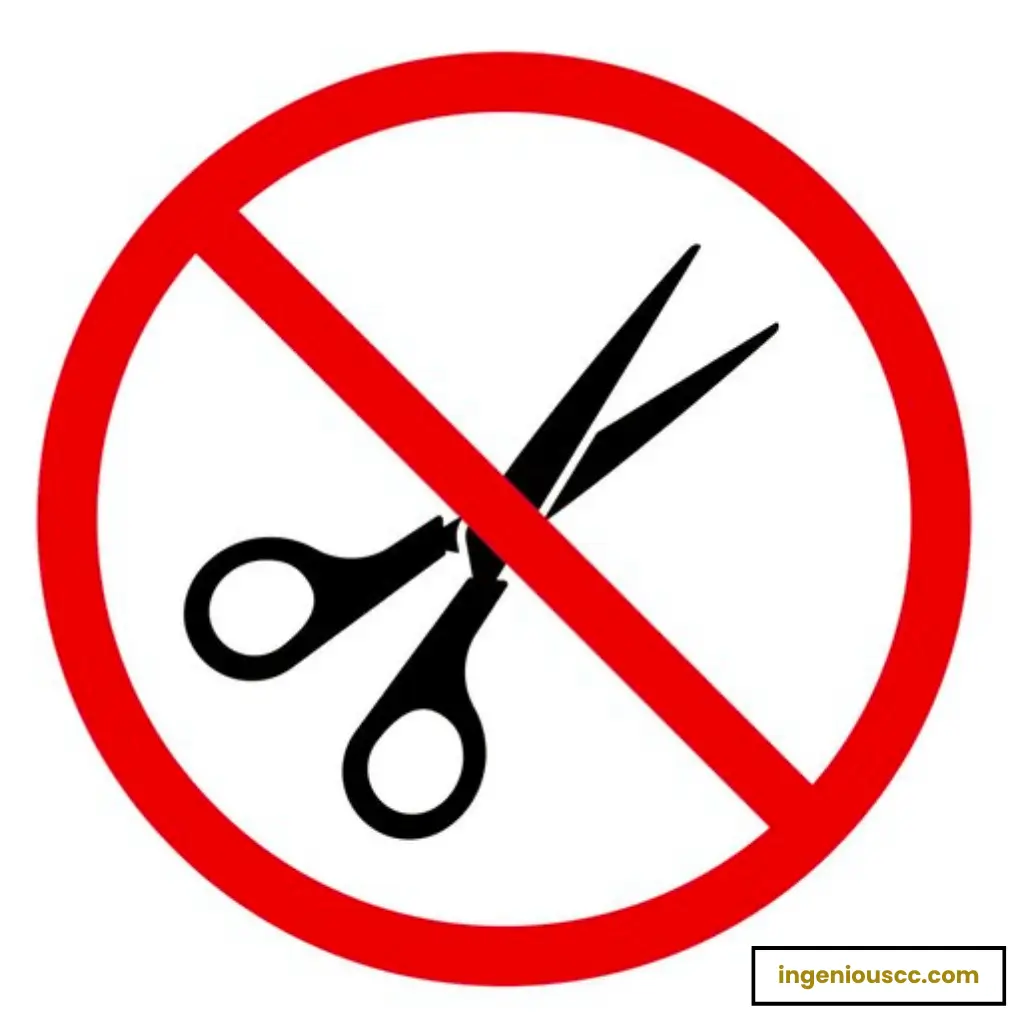
So why the ban?
Straightforwardly, it’s all about safety first. Below are the brief “whys” of not allowing scissors in the school cafeteria.
- Safety Considerations: Scissors are sharp and can cause injuries if dropped while students move around with food.
- Potential for Misuse: Students might cut inappropriate items, like bags or tablecloths, disrupting lunch.
- Food Safety: Improper use of scissors can contaminate food. For example, using unclean scissors to open packages can introduce germs.
- Injuries: Accidental stabbings or cuts can occur if students aren’t careful while using scissors, requiring medical attention.
- Potential for Theft: Scissors can be taken and misused, such as cutting clothing, which raises safety concerns.
- Accidental Cuts: Distractions can lead to accidental cuts. For instance, talking while using scissors can harm others.
- Spills and Droppage: Dropped scissors can cause spills. A student dropping them while reaching for food can create a mess.
- Limited Space: Crowded cafeterias increase the risk of accidents. Bumping into others while holding scissors can cause injuries.
Hence, banning scissors isn’t about being mean but keeping everyone safe from incidental pokes and cuts.
Plus, let’s face it, scissors weren’t made for lunchtime antics. They’re for crafts and precision, not for snipping sandwiches or experimenting with napkins. By disallowing scissors, schools can prevent accidents, stop any potential mischief, and protect their property. After all, it’s better to be safe than sorry!
A Quick Look at Other Forbidden Items in School Cafeterias
The issue of restrictions isn’t confined to scissors. Since students spend a good chunk of their day in schools, and cafeterias are often their go-to spots, the focus on promoting healthy eating and serving nutritious meals goes hand in hand with keeping safety front and center.
Below is a rundown of other items barred by government and state regulations to ensure student welfare.
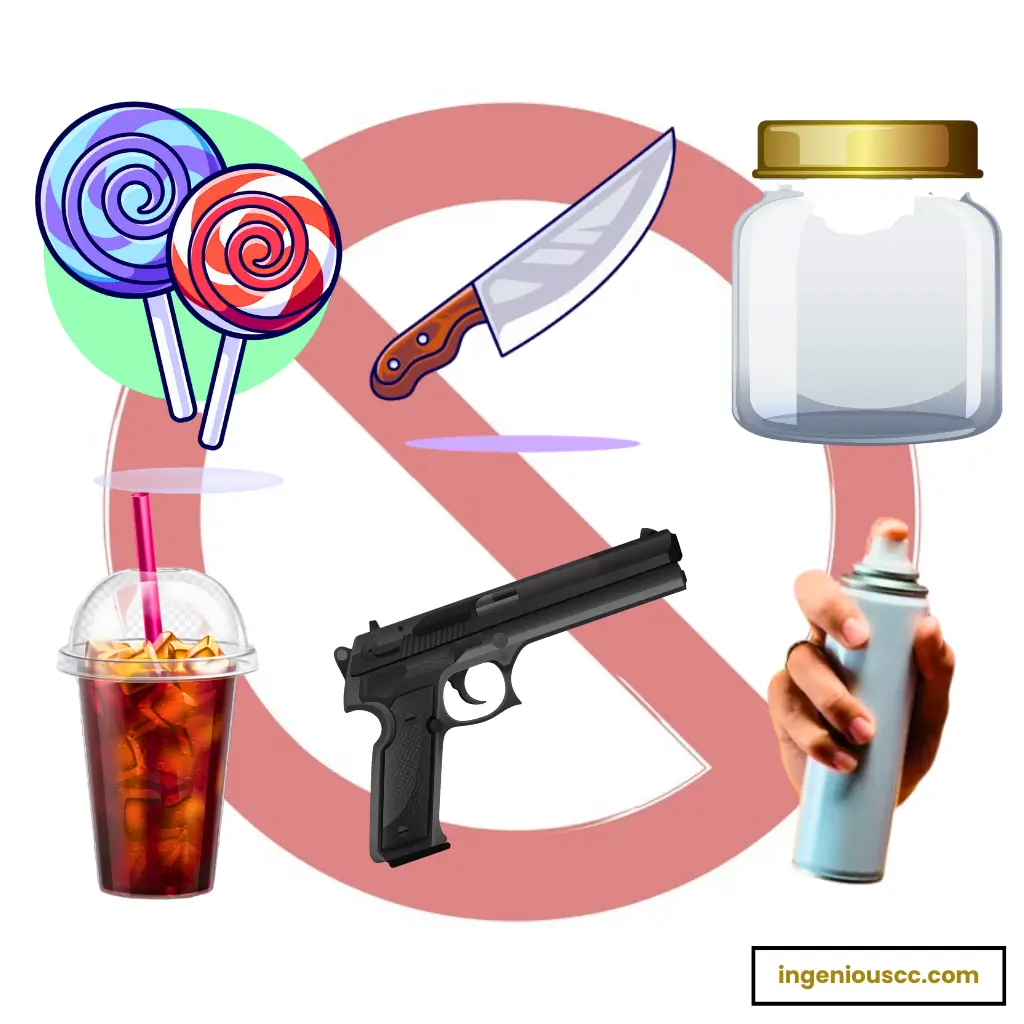
- Knives: Many schools ban pocket knives and sharp tools. For example, a 10-year-old girl in Philadelphia was handcuffed for bringing scissors to school.
- Self-defense Spray Devices: Mace and pepper sprays are banned due to potential harm. However, students 14 or older may carry them with parental permission under RCW 9.91.160.
- Firearms: All types of guns, including handguns, rifles, and shotguns, are strictly prohibited in schools.
- Blunt Objects: Items like baseball bats and clubs are banned as they can be used to cause harm.
- Explosives: Fireworks, bombs, and explosive devices are prohibited on school grounds.
- Sharp Objects: Tools with sharp edges, such as box cutters, are banned for safety reasons.
- Glass Containers: Glass containers are banned because they can break and cause safety hazards.
- Carbonated Drinks: Soda and fizzy drinks are often banned due to their high sugar content and lack of nutritional value.
Suggested Reading → Soda in Schools: A Healthy Choice or a Sugary Trap?
- Gum: Gum is typically banned as it can stick to surfaces and is hard to clean up.
- Energy Drinks: Energy drinks are banned due to their high caffeine content and potential health risks for children.
- Candy: Candy is often restricted because of its high sugar content and poor nutritional value.
- Outside Food: Some schools ban outside food to ensure all meals meet nutritional guidelines and support the school’s meal program.
What Items Should Be Banned for Cafeteria Safety? ICC Experts perspective
At Ingenious Culinary Concepts (ICC), we’ve been delivering cafeteria services for many years.
Our chief executive, Kern Halls, consistently encourages and shares valuable advice for ensuring student well-being and defense in the cafeteria during staff training. Here are some of his recommendations that can help schools enhance their list of prohibited items to ensure the well-being of both staff and students:
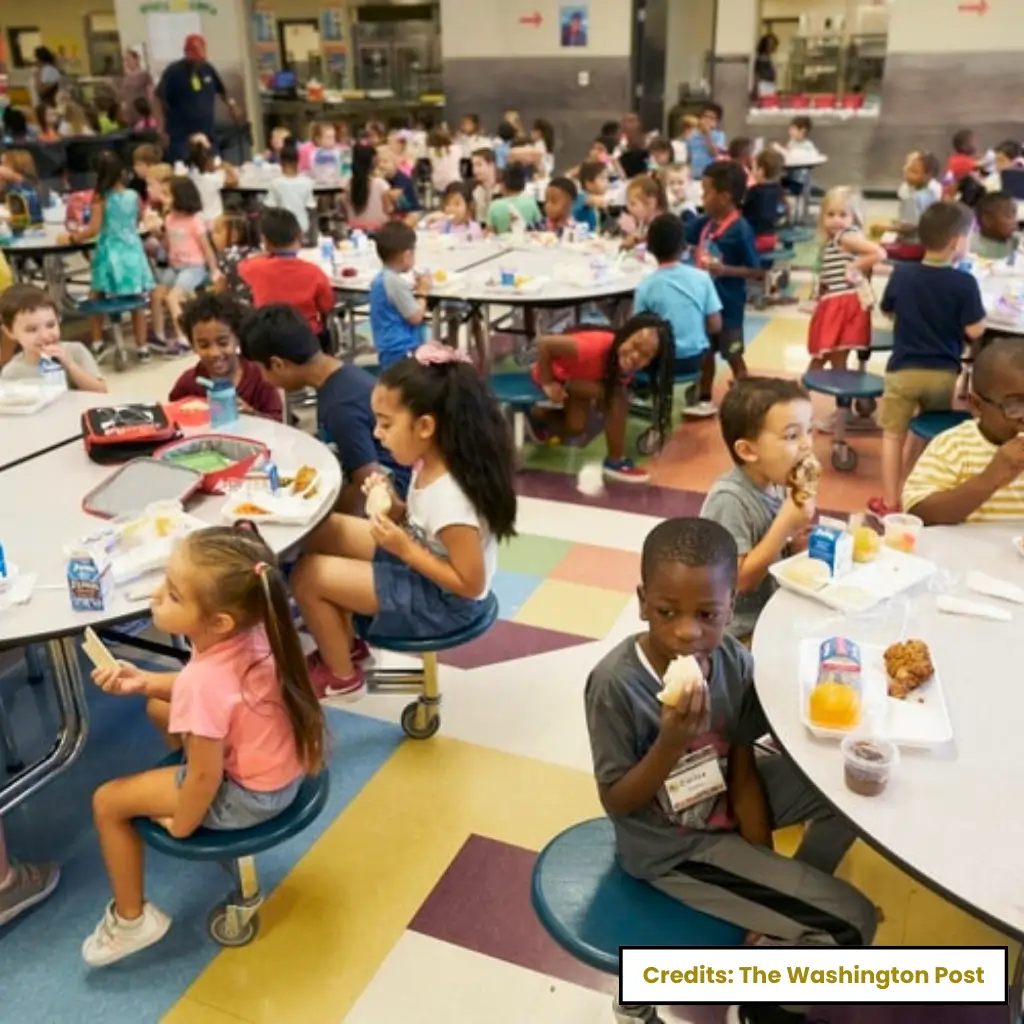
- Heavy Backpacks: Bulky, large bags can create tripping hazards in a crowded cafeteria. It’s safer for students to store their backpacks in lockers or designated areas.
- Personal Electronic Devices: Gadgets like smartphones and tablets can be distracting and lead to mishaps. It is best to use them in specific areas outside of mealtimes so students stay alert to their surroundings.
- Sports Equipment: Baseball bats and hockey sticks can be risky in busy spaces. To ensure safety, these should not be permitted in the cafeteria.
- Unregulated Food and Drinks: Snacks and beverages such as fast food that don’t meet the school’s nutrition guidelines can pose health risks, especially for students with allergies.
- Aerosol Cans: Spray products like deodorants can be hazardous due to their flammability and potential respiratory effects. Safer alternatives should be utilized instead.
- Unlabeled Cleaning Products: Cleaning supplies must be marked and stored securely to prevent accidents. Unlabeled chemicals can be dangerous if someone accidentally touches or ingests them.
- Portable Heaters or Fans: Small heaters or fans can cause electrical fires or burns. To maintain safety, they should not be allowed in the cafeteria.
- Laser Pointers: Laser pointers can cause eye injuries and distractions. Keeping them out of the cafeteria helps prevent accidents.
- Large Sums of Money: Carrying large amounts of cash can result in theft or disputes among students. It’s advisable to avoid bringing significant sums to school.
- Toys and Games: Items like toys and handheld games can cause interruptions and disagreements. They should not be allowed in the cafeteria to maintain a peaceful atmosphere during lunch.
Ensuring Student Safety in the Cafeteria: The Role of School Management and Teachers
The meals offered immediately come to mind when we think of student safety in the cafeteria. Undoubtedly, food safety is the top priority that schools must address, but many other elements contribute to a positive and healthy cafeteria environment. Below are some best practices that schools can implement to achieve this:
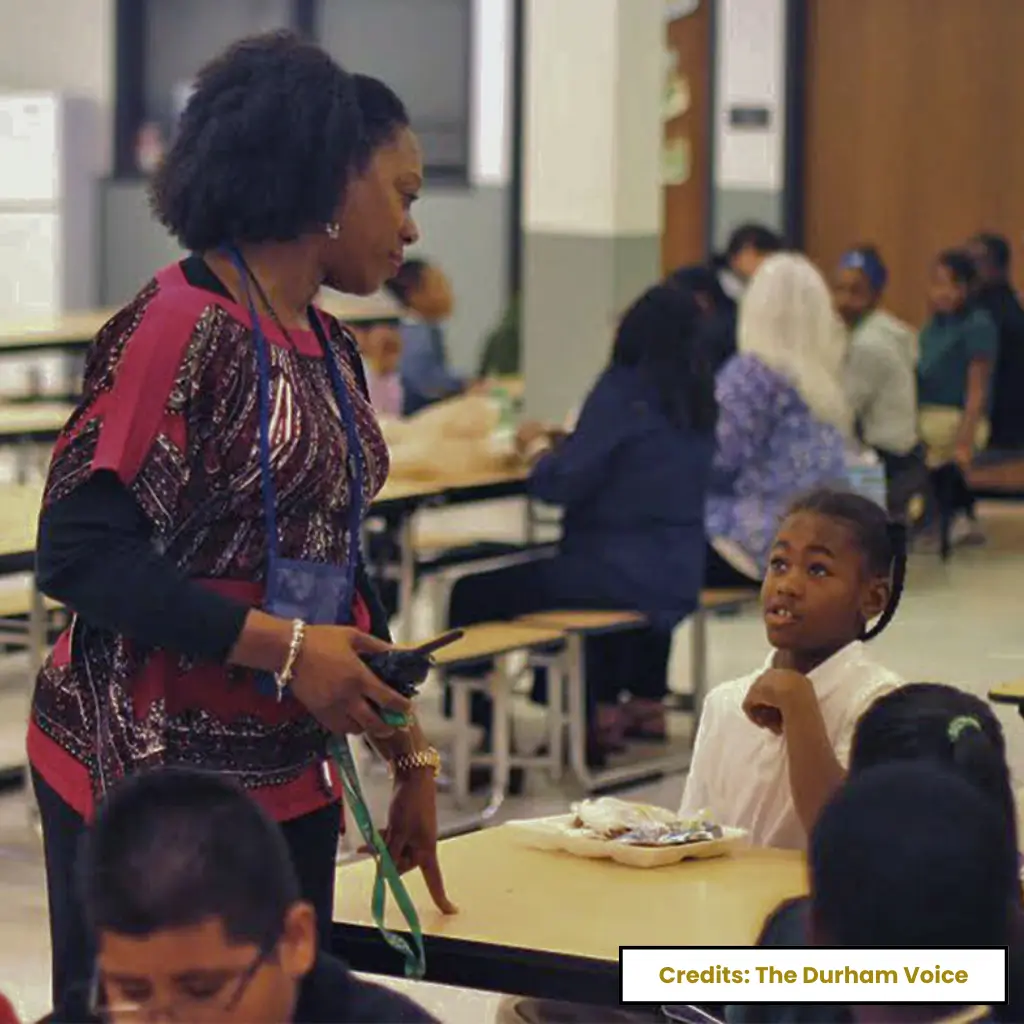
School Management
- Creating Rules: Higher authorities must establish cafeteria safety policies and procedures. They should work closely with teachers to teach students these rules and ensure they are followed strictly. For example, they can list items not allowed on the cafeteria bulletin board.
- Keeping the Cafeteria Safe: It is important to regularly check and maintain cafeteria facilities. Management should ensure that the tables, chairs, and other equipment in use are safe and in good condition. They should also plan and choose the seating arrangements carefully to prevent accidents.
- Being Ready for Emergencies: School management must have emergency procedures in place and review them regularly. All teachers, cafeteria workers, supporting staff, and students should know what to do in an emergency, like a fire or a medical incident. They might consider hiring a cafeteria nurse to provide quick medical help if needed
- Extra Help: Management can assign a head teacher or coordinating staff to supervise the cafeteria on a rotating basis. This ensures that policies are followed and helps keep students safe during lunch.
Suggested Reading → How To Manage A School Cafeteria
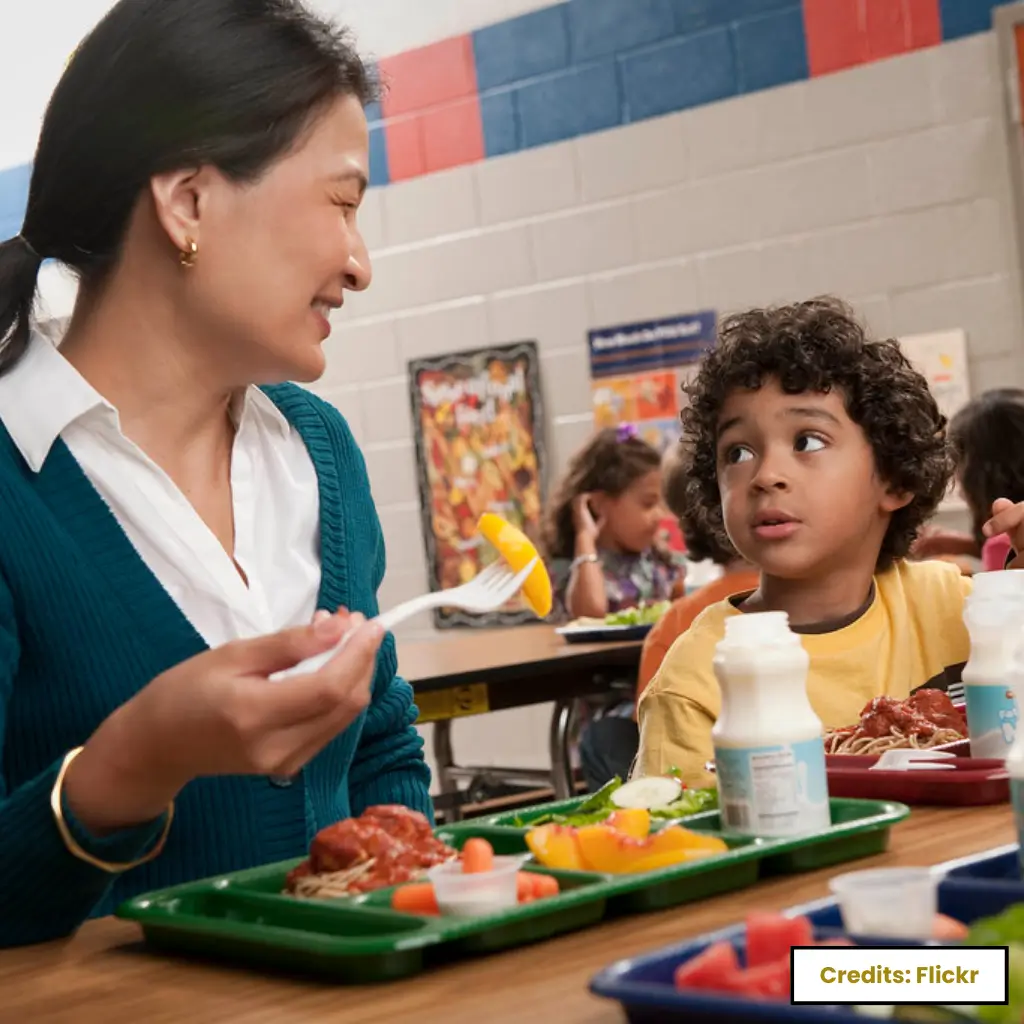
Teachers and Staff
- Supervision: Teachers are crucial in maintaining order and managing discipline and safety in the cafeteria. By actively supervising students during meal times, they can quickly address disruptive behavior or potential hazards.
- First Aid: Teachers should be trained in basic first aid to handle minor injuries or health issues that may arise during lunch periods.
- Hazard Identification: Faculty should be vigilant in identifying and reporting safety hazards, ensuring that dangerous materials are either removed or clearly marked.
- Encouraging Communication: Teachers should create an open line of communication, encouraging students to report safety concerns or issues without fear of retaliation.
- Monitoring Equipment: Teachers must monitor cafeteria equipment (e.g., trays and utensils) to ensure they are in good condition and report any issues that could pose safety risks.
Wrapping Up!
In conclusion, the reason for not allowing harmful items like scissors is straightforward and clear. However, just having rules isn’t enough. Schools must diligently uphold their rules and ensure they follow the letter. After all, schools exist because of students, and if students aren’t safe, then their mission is a house of cards destined to fall. Thus, keeping students secure is the name of the game, and it’s essential for a thriving learning environment.
Suggested Reading → How To Create The Best High School Cafeteria
FAQs
1. What items are typically prohibited in the school cafeteria?
Commonly prohibited items include sharp objects (like scissors or knives), glass containers, outside food and beverages that aren’t approved, and any items that may cause allergies, such as peanuts or other allergens.
2. What are the safety concerns associated with scissors in the cafeteria?
The main safety concerns include the potential for cuts or injuries if scissors are dropped or misused. Additionally, they can be misused as weapons in conflicts, making it essential to keep them out of the cafeteria.
3. Are there alternatives to scissors that can be used in the cafeteria?
Yes, schools often provide safer alternatives for food preparation or crafting activities, such as child-safe scissors or pre-packaged items that don’t require cutting. This helps maintain a secure environment for all students.

